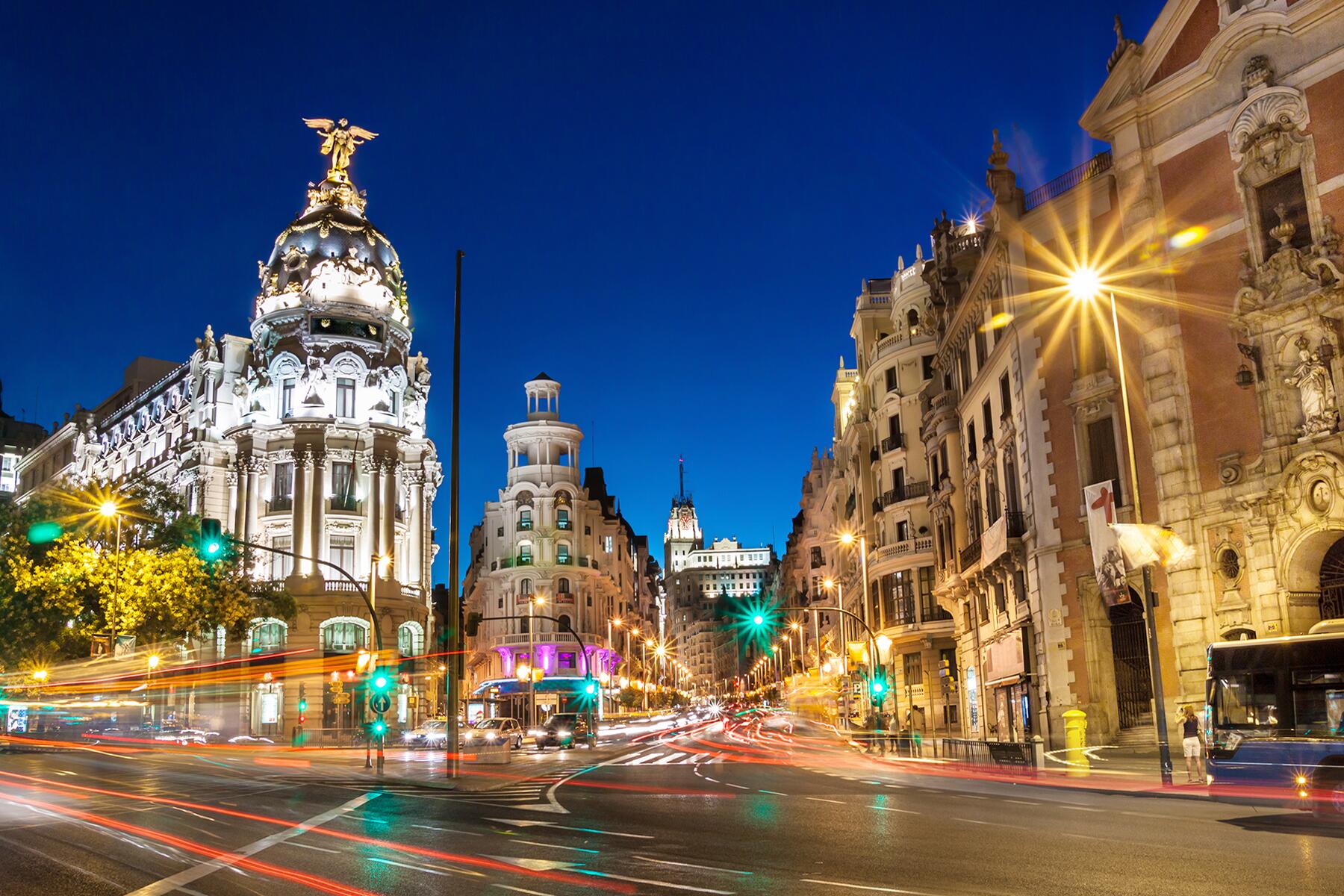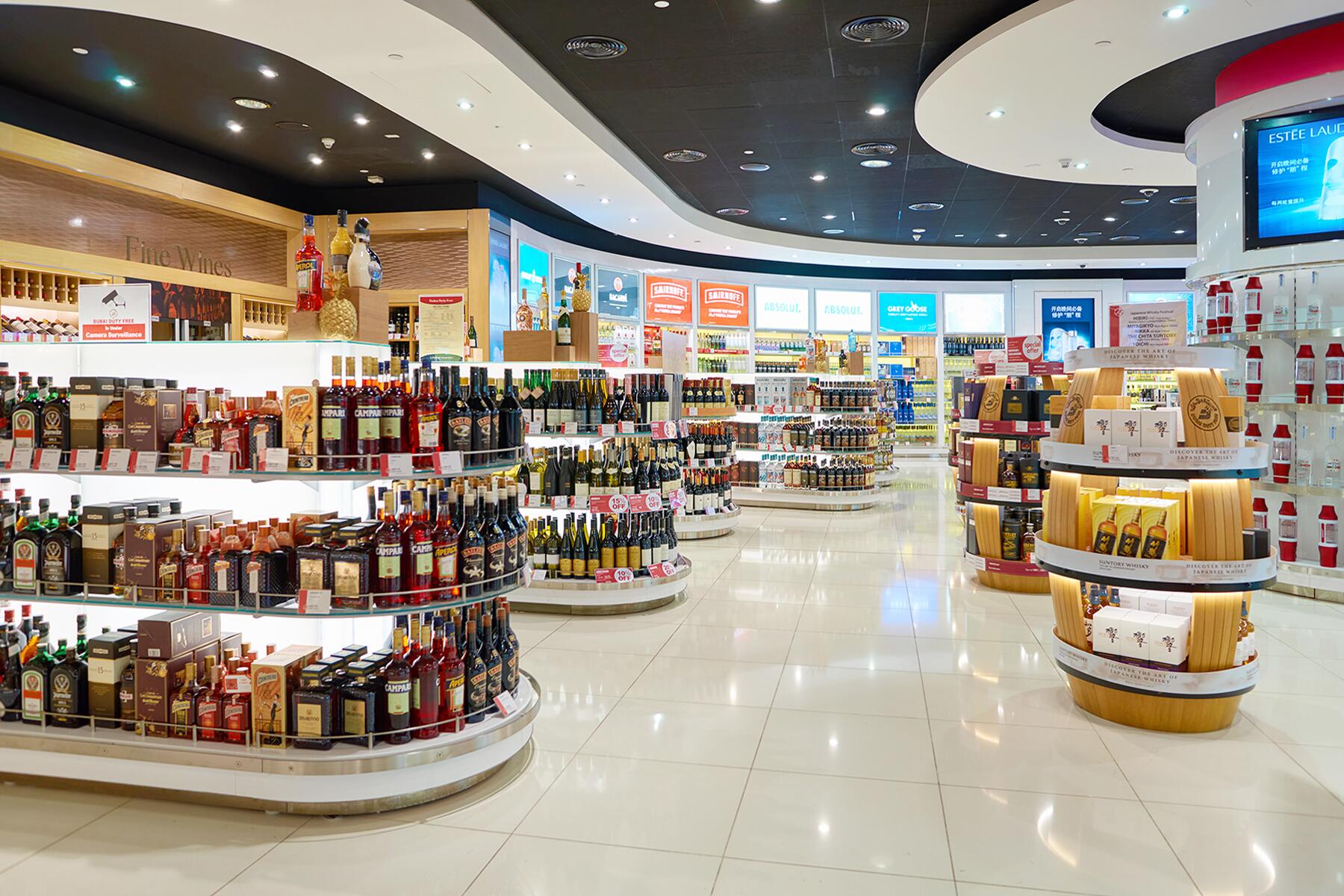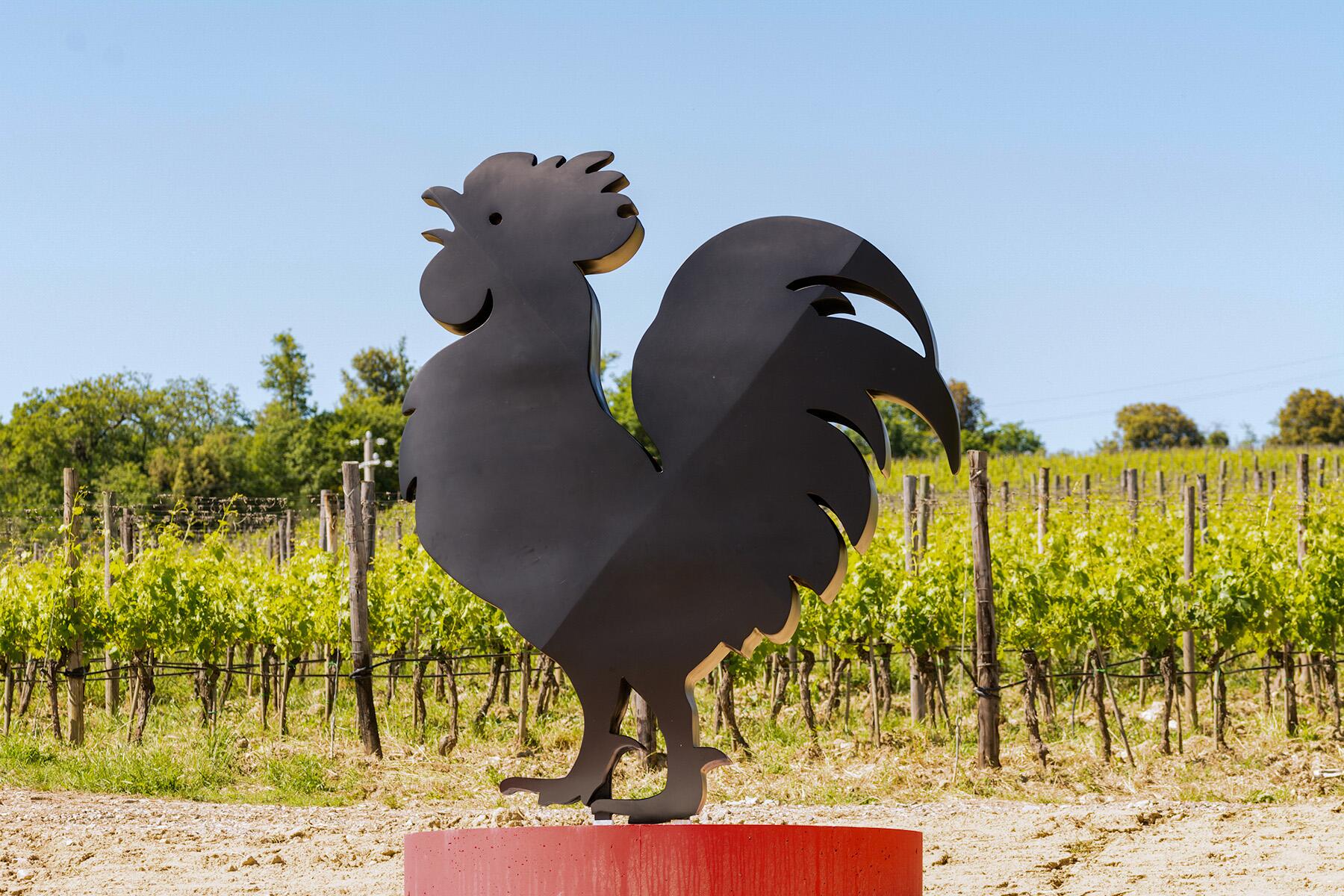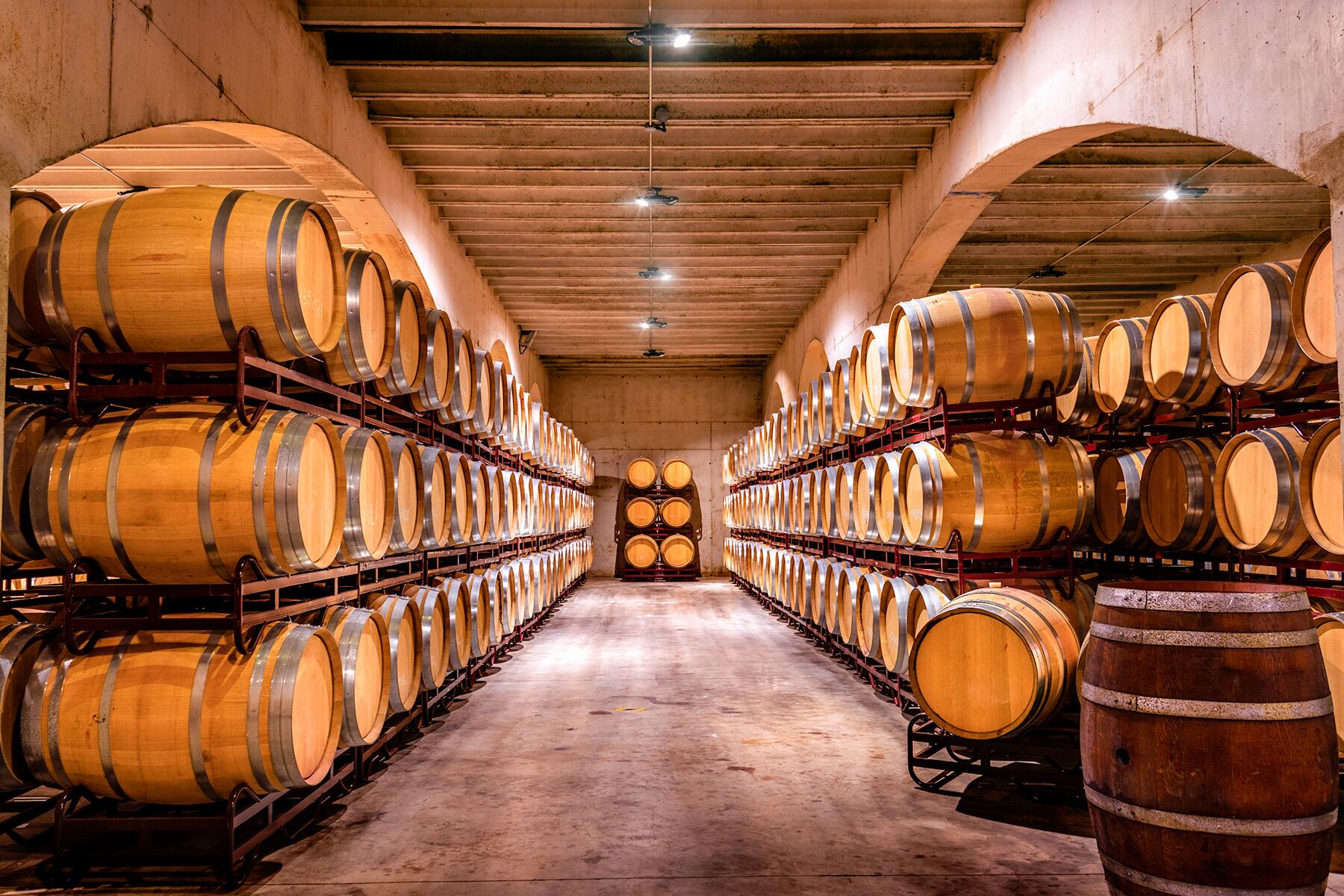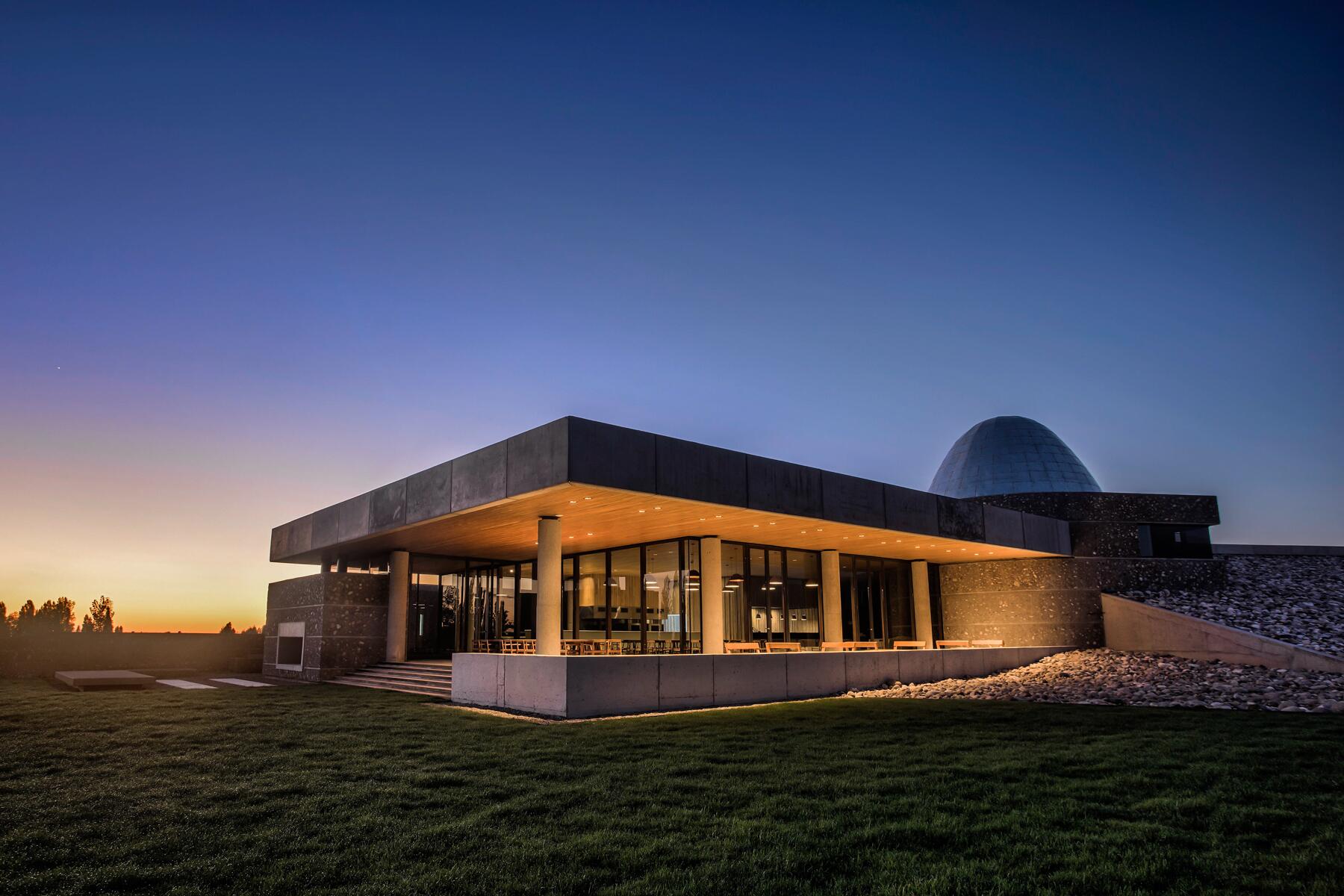There’s much more than Malbec in this stylish, beautiful, and delicious country.
When you think of wine in Argentina, Malbec is the first thing that comes to mind. But this enormous country full of hip cities, dramatic mountains, and colorful deserts is one of the most fascinating and exciting wine destinations in the world. A new crop of young winemakers–many of them women–is turning this country into the world’s coolest wine destination with ingenious fermentation processes, beautifully-designed vineyards, and terroir like no other place on earth. You’ll come to Argentina to eat steak and sip on Malbec, but you’ll leave with a greater appreciation of Argentine food and wine culture–and the incredible landscapes along the way.
Top Picks for You
Buenos Aires
Buenos Aires is undeniably one of the greatest cities in the world. Gorgeous architecture, beautiful weather, dynamic neighborhoods, stylish locals, and a lively atmosphere make Buenos Aires a city that’s hard not to love. People often compare BA to Paris, and with the architecture, parks, shopping, and wine culture, it makes sense. While the city isn’t known for its wineries or vineyards, it’s still an excellent place to get acquainted with Argentina’s wine culture. Parilla Don Julio, a BA staple that was recently recognized as the best restaurant in Argentina, has one of the most diverse and interesting wine cellars in the city. Here, you can get a taste of Argentina’s varied wine regions, from Patagonia in the south to Salta in the north.
Where to Eat and Drink: Indulge in gluttony with some of the best steak of your life at Parilla Don Julio, or opt for something a bit lighter at Roux Resto. Buenos Aires is also home to two of the world’s top 50 bars: Floreria Atlantico and Presidente Bar.
Where to Stay: Palacio Duhau is one of the most gorgeous properties in the city, with contemporary and minimalist furnishings within the royal and indulgent shell of a 1930s palace. On the more affordable side, Casa Sur in hip Palermo will give you easy access to the city’s coolest boutiques and galleries and even has a vegan restaurant and cocktail bar in the lobby.
Mendoza
Mendoza can refer to both the town of Mendoza and the province of Mendoza, which is where most of Argentina’s wine is produced. There aren’t any vineyards or wineries directly in the city of Mendoza, but it’s still worth a visit for tree-lined streets, colonial architecture, and a lively nightlife. The main square, Plaza Independencia, is the heart of the city, where you’ll find shops, cafes, and bars. Bodega Escorihuela, about 10 to 15 minutes from the city center, is one of the closest wineries. The 1884 winery has been updated with modern buildings and is home to Mendoza’s largest barrel, which can hold over 16,000 gallons of wine–it’s also home to one of celebrity chef Francis Mallman’s famous restaurants, 1884.
Where to Eat and Drink: Cozy Azafran is a destination for wine drinkers, with over 400 labels on offer, but no wine list. Instead, a sommelier will help you choose a bottle. Naoki Wine Garden is an indoor-outdoor restaurant and wine bar and one of the most stylish places to drink in Mendoza. If you’re getting tired of empanadas (likely impossible; they’re delicious) then head to Marie Antoinette, where you’ll find French- and Italian-inspired dishes in an elegant setting. Don’t worry, though: there’s still Argentine wine on the menu.
Where to Stay: The glitzy Park Hyatt Mendoza is in a grand 19th-century Spanish Colonial building with simple yet comfortable rooms, a wine bar, and a pool that’s perfect for lounging. Ask about any special events before your trip, as the hotel often hosts wine dinners.
Recommended Fodor’s Video
Luján De Cuyo
Under an hour from Medoza, Lujan de Cuyo is a sleepy village surrounded by sprawling wineries and rustic farms. The quiet roads lined with cypress trees are reminiscent of Tuscany and Provence, and the warm weather and blue skies make it truly feel like the ultimate vacation destination for wine lovers.
Argentina is full of wildly creative and beautiful wineries, and Enemigo is emblematic of that. The winery, covered in murals and accented with colorful glass window panes to give the buildings a stained glass effect, feels more like an artist’s studio than a vineyard. Visitors can browse the vines and the herb garden or take a stroll through the secret passages and underground wine cave where local art is on display. Don’t miss the creepy steel sculpture out back, (oddly) created by the winery’s notary.
Old meets new at Casarena, whose beautiful winery is set in a restored barn. The team here is young and creative, experimenting with microfermentation to highlight the terroir of their four vineyards, all named after the owners’ grandchildren.
Lujan de Cuyo is wine paradise, but with all that drinking, you need something to balance it out. Yoga in the Vines puts together a roving yoga class that takes place in vineyards throughout the Mendoza area. Join them for a one-hour class with Tibetan singing bowls (mats and blankets are provided) or add on a tasting or lunch. If you’d rather sweat out your toxins without exercise, book a treatment at Entre Cielos’ traditional Turkish hammam, where a six-step circuit leaves you scrubbed, steamed, and purified. And if you’re looking for adventure, Bodega Gimenez Riili offers horseback rides through the vineyards and hills surrounding the property.
Where to Eat and Drink: While the town of Lujan de Cuyo has a few scattered casual eateries, it’s best to skip the downtown and head for the wineries–just be sure to reserve in advance, especially for lunch. Spend a leisurely afternoon dining outdoors at Casarena, sipping on Malbec rosé, or make a reservation to dine in the stained glass dining room at Enemigo. If you’re with a group, Enemigo is available for private dining reservations at night with a set seven-course menu and wine tasting.
Where to Stay: Entre Cielos is one of the coolest places to stay near Mendoza, with funky space-age vibe in the main cement building and individual cabins scattered throughout the vineyard. If you’re there in the warmer months, the pool will be your saving grace.
Uco Valley
Uco Valley might be Argentina’s hottest wine destination right now, where vines are planted along the foothills of the Andes and a new crop of young winemakers are experimenting with innovative ways to highlight the unique terroir of the region. Visit now before everyone else does and you’ll get to sip on some wine history in the making.
Zuccardi Family Vineyards looks like a spaceship that has landed in the desert. The winery, built from concrete and local materials, mirrors the mountains in the distance. Inside the sleek and futuristic winery, tours take you through rooms filled with concrete, stainless steel, and oak barrels fermenting wines that put the unique topography and geology of the region to work in creative ways.
At Ernesto Catena, biodynamic wines are produced with no additives and no intervention in the process. The result is a completely refreshing glass of wine that would wow drinkers at any hip wine bar in Brooklyn or Paris. The vineyard and winery has a bohemian feel, with llamas roaming through the vines and a few hammocks strung up overlooking a pond. It’s a lovely way to pass the afternoon or even take a siesta (coincidentally, “Siesta” is the name of one of their most popular natural Malbecs).
Where to Eat and Drink: Zuccardi’s restaurant is a masterpiece and a must-visit destination in its own right. It’s only open for lunch and reservations are required, so plan ahead for one of the best meals of your trip. There’s a set four-course menu that focuses on sustainable and local ingredients prepared simply and beautifully. Start with homemade focaccia and the vineyard’s own olive oil before veggie-forward first and second courses and a final asado—a giant slab of grilled meat served with potatoes and salad.
Francis Mallman has a restaurant in the Uco Valley called Siete Fuegos (Seven Fires) that’s the perfect place to experience some of Argentina’s famed traditional cooking methods. Inside the luxe Vines Resort and Spa, it’s a surprisingly great restaurant for vegetarians and those who have had their fill of steak and would prefer fish or chicken. The three-course menu is decadent and delicious, and the gorgeous setting with views of the sunset behind the Andes is unbeatable.
Where to Stay: One of the best hotels in the world can be found in the Uco Valley. Casa de Uco, an impeccably-designed modern masterpiece, is surrounded by vineyards and views of the Andes. The rooms and villas are sumptuous and cozy, with lots of leather accents. Vines Resort and Spa, one of the leading hotels of the world, is comprised of spacious one-story villas situated in the middle of 1500 acres of vines. The minimalist construction is reminiscent of Frank Lloyd Wright and the grey buildings blend perfectly into their surroundings.
Salta
The colonial town of Salta, high in the desert in Argentina’s far north, is one of the most beautiful and fascinating places in the country. Salta refers to both the province of Salta (encompassing the desert landscapes surrounding the city and the town of Cafayate, nearly three hours away) and this tiny city, where a few streets surrounding the main park are jam-packed with cafes, shops, and cultural sights like the San Francisco church or the MAAM, the Museo Archaeologico de Alta Montana. Along Salta’s Ruta del Vino, visitors can discover wineries in Cachi, Molinos, Angastaco, San Carlos, and Cafayate.
Where to Eat and Drink: The fascinating culture of the high Andes is highlighted at Jose Balcarce, a downtown restaurant that puts a gourmet spin on traditional cuisine with ingredients like quinoa and llama. In the afternoon, grab a drink at one of the sidewalk cafes surrounding the Plaza 9 de Julio, a leafy park in the center of the city.
Where to Stay: Salta is home to one of the most beautiful hotels in Argentina. House of the Jasmines is a Relais and Chateaux property in a 100-year-old house. Inside, whitewashed walls, dark wood accents, and colorful wool blankets decorate the perfectly cozy estancia.
Cafayate
A visit to Cafayate feels like a step back in time. The tiny, dusty desert town, three hours from Salta on a winding road, is surrounded by wide expanses of vineyards hemmed in by the red cliffs of the Andes. Though remote, Cafayate is a must-visit for wine lovers because it’s home to Torrontes, Argentina’s popular wine that tastes like a white wine made for red wine drinkers. The high-altitude desert terrain of Cafayate means it’s the perfect place to grow Torrontes, a grape that thrives in dry, sunny climates. Torrontes has been grown in Argentina since the 1500s, but it wasn’t until the 60s that they finally gave it a name. It’s still quite hard to find outside of Argentina–even at specialty wine shops–so you’ll really have to visit to experience this unique wine that’s neither sweet nor acidic, but rounded, crisp, refreshing, floral, and aromatic. It’s more similar to a Pinot Grigio or a Sauvignon Blanc to a Chardonnay, but it’s more robust and layered, making it a wine that pairs wonderfully with food. It’s delicious cold, but it’s still refreshing after it’s warmed up a bit, making it the perfect wine for drinking under the sunny blue skies of Cafayate. The town’s oldest and most established winery is El Esteco, where you can tour the vineyards, sit down for a tasting in the courtyard of the beautiful hacienda, and completely raid the onsite wine store, where you’ll get high-quality wines at a fraction of the price that you’ll find them (if you can even find them) back home. They also sell wine sleeves to carefully pack your bottles.
Piatelli Vineyards is an impressive estate with a prime location in the foothills. The sunset view from here is unbeatable and the massive winery has a restaurant, tasting room, and gift shop.
Truly adventurous wine lovers can make the three-hour drive from Cafayate to Colomé Vineyards, part of the Hess Collection and home to some of the highest vineyards in the world.
Where to Eat and Drink: Downtown Cafayate is surprisingly hopping, with plenty of bars and restaurants packed around the main square. You can’t go wrong with an alfresco glass of wine at any of the tiny cafes, but those in search of some authentic folkloric music should visit Dona Argentina, a bar and venue that’s popular with locals. If you want a long, luxurious lunch, dine at Patios de Cafayate, a hacienda-style hotel with a restaurant serving traditional Argentine cuisine.
Where to Stay: Patios de Cafayate is by far the best option in the area, with an old-school rustic authenticity that makes the hotel feel like a blast from the past. The common areas are decorated with art and antiques from the area, and the pool, courtyards, and outdoor spaces manage to incorporate the natural beauty of the area. Grace Cafayate is another great option in town with massive villas that have their own kitchens, living rooms, and hot tubs.
Patagonia
Though it seems impossible, this land of craggy mountain peaks and rugged glacial terrain is home to some surprisingly good wine. In this cold and rainy climate, white wines are full of delicious acidity and reds are elegant and complex.
Casa Yague, in the Chubut province of Argentina, is one of the southernmost wineries in the world at 43 degrees south. (For reference, South Africa’s Franschhoek wineries are at 33 degrees south.) Familia Schroeder’s Patagonia Pinot Noir and Malma’s Malbec, both from Neuquen, are proof that Patagonia’s reds can compete with the famed labels of Mendoza.
Where to Eat and Drink: Mako Fuegos y Vinos in El Calafate has an extensive wine list and typical Argentine dishes. La Posta, at Posada los Alamos, serves traditional asado in a grand setting.
Where to Stay: Xelena Hotel and Suites in El Calafate has quaint and cozy rooms and an organic farm on Lago Argentina, with easy access to some of Patagonia’s greatest hits.
